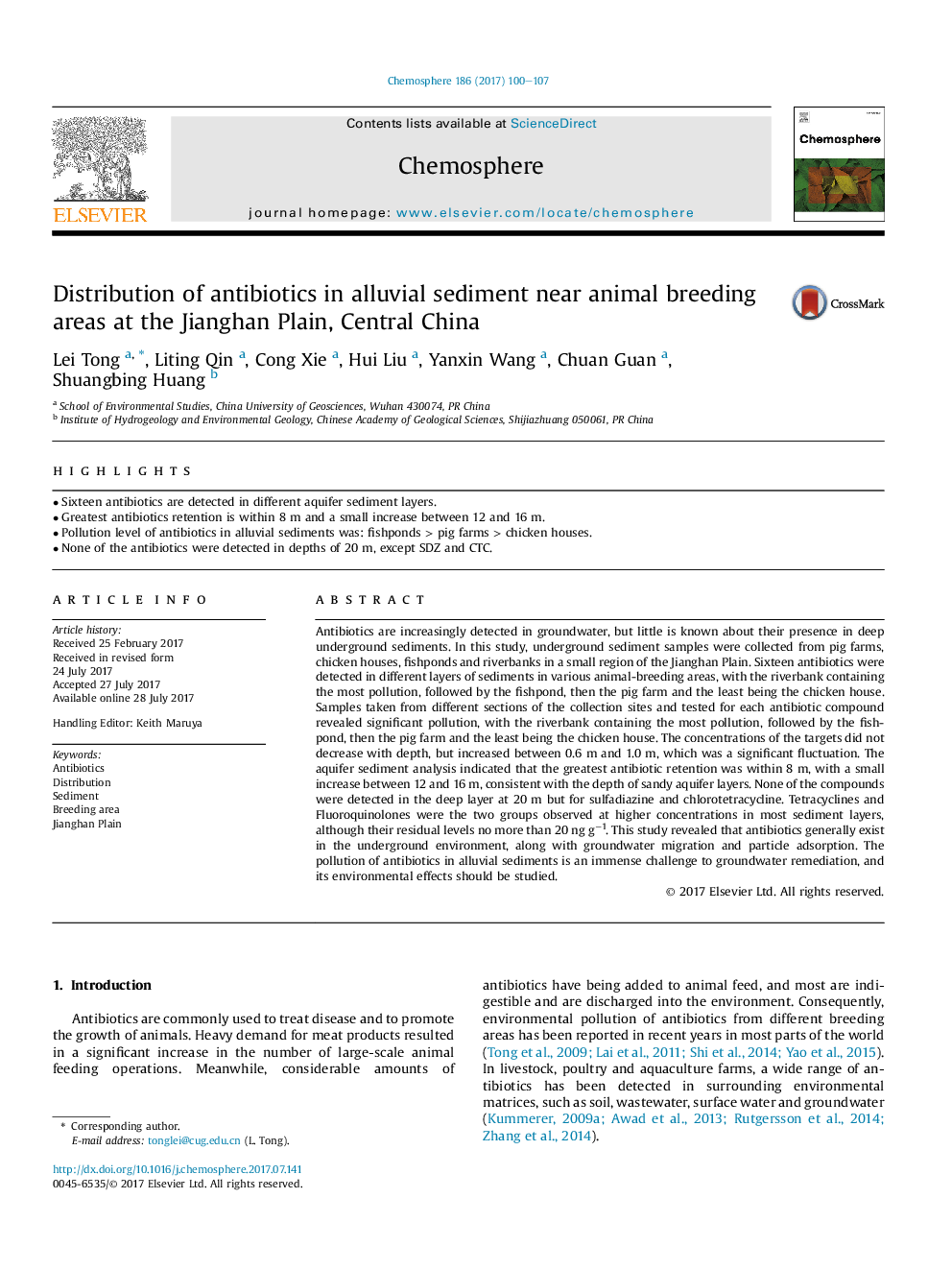| کد مقاله | کد نشریه | سال انتشار | مقاله انگلیسی | نسخه تمام متن |
|---|---|---|---|---|
| 5746010 | 1618785 | 2017 | 8 صفحه PDF | دانلود رایگان |
- Sixteen antibiotics are detected in different aquifer sediment layers.
- Greatest antibiotics retention is within 8Â m and a small increase between 12 and 16Â m.
- Pollution level of antibiotics in alluvial sediments was: fishponds > pig farms > chicken houses.
- None of the antibiotics were detected in depths of 20Â m, except SDZ and CTC.
Antibiotics are increasingly detected in groundwater, but little is known about their presence in deep underground sediments. In this study, underground sediment samples were collected from pig farms, chicken houses, fishponds and riverbanks in a small region of the Jianghan Plain. Sixteen antibiotics were detected in different layers of sediments in various animal-breeding areas, with the riverbank containing the most pollution, followed by the fishpond, then the pig farm and the least being the chicken house. Samples taken from different sections of the collection sites and tested for each antibiotic compound revealed significant pollution, with the riverbank containing the most pollution, followed by the fishpond, then the pig farm and the least being the chicken house. The concentrations of the targets did not decrease with depth, but increased between 0.6 m and 1.0 m, which was a significant fluctuation. The aquifer sediment analysis indicated that the greatest antibiotic retention was within 8 m, with a small increase between 12 and 16 m, consistent with the depth of sandy aquifer layers. None of the compounds were detected in the deep layer at 20 m but for sulfadiazine and chlorotetracycline. Tetracyclines and Fluoroquinolones were the two groups observed at higher concentrations in most sediment layers, although their residual levels no more than 20 ng gâ1. This study revealed that antibiotics generally exist in the underground environment, along with groundwater migration and particle adsorption. The pollution of antibiotics in alluvial sediments is an immense challenge to groundwater remediation, and its environmental effects should be studied.
Journal: Chemosphere - Volume 186, November 2017, Pages 100-107
